Urbanization inevitably transforms the landscapes it inhabits. Cities pulse with cultural diversity, commerce, movement, and exchange—bringing energy and connection to our lives. Yet, as concrete sprawls and car dependency rises, many urban areas are turning into ecological dead zones, burdened by air, noise and light pollution.
By thoughtfully weaving biodiversity into the built environment, we can align human activity with nature, creating spaces that support both ecological health and human well-being. Prioritizing green infrastructure and essential pollinators like bees, butterflies, and birds allows cities to flourish as vibrant ecosystems. When we let nature guide our planning and design, we cultivate not only resilient but regenerative, inspiring environments where both people and wildlife can thrive.
Why Biodiversity and Pollinators Matter in Urban Development
Biodiversity—the variety of life within ecosystems—plays a fundamental role in maintaining environmental stability. Pollinators, including bees, butterflies, hummingbirds, and bats, are vital to sustaining biodiversity by facilitating plant reproduction. In urban settings, fostering biodiversity and supporting pollinators can:
- Improve air and water quality
- Enhance food production and urban agriculture
- Regulate temperature through natural cooling mechanisms
- Strengthen climate resilience by promoting ecological balance
- Improve mental and physical health by connecting people with nature
Ignoring biodiversity and pollinators in urban planning leads to habitat destruction, food insecurity, urban heat island effects, and loss of essential ecosystem services. This makes cities more vulnerable to climate change and environmental degradation.

Strategies for Enhancing Biodiversity and Supporting Pollinators in the Built Environment
1. Green Infrastructure & Nature-Based Solutions
Incorporating green roofs, living walls, and rain gardens enhances urban biodiversity while improving air quality and stormwater management. These nature-based solutions create essential habitats for pollinators and native plants, contributing to healthier urban ecosystems.

Brooklyn Grange
Founded in 2010, Brooklyn Grange is the leading rooftop farming and intensive green roofing business in the US, operating the world’s largest rooftop soil farms, located in New York City. Brooklyn Grange promotes sustainable urban living by building green spaces, hosting educational programming and events, and widening access to locally grown produce in New York City communities. Brooklyn Grange’s purpose is to restore the connection between people and the natural world. We create meaningful livelihood opportunities and steward green spaces in the built environment to foster more livable and climate-adapted cities.
2. Pollinator-Friendly Planting & Urban Beekeeping
Integrating native flowering plants, meadows, and pollinator gardens into urban landscapes provides essential nectar sources for bees, butterflies, and other pollinators. Urban beekeeping initiatives, such as rooftop apiaries and community-led pollinator programs, help restore declining bee populations while fostering local food production. A living and breathing example of this is the IGA Organic Rooftop Farm.

IGA ORGANIC ROOFTOP FARM
25,000 square foot rooftop garden of IGA Extra Famille Duchemin grocery store, created in 2017 in Montreal, produces about 35 types of produce that the store harvests and sells themselves. Richard Duchemin, co-owner of the IGA Extra Famille Duchemin, says his grocery was the first in Canada to sell produce that’s grown on its roof. About 35 types of produce are being grown in the 25,000-sq.-ft. rooftop garden — about half the total roof area.
3. Urban Rewilding & Habitat Restoration
Transforming underutilized spaces into biodiverse ecosystems, such as converting vacant lots into pollinator-friendly gardens, helps reconnect urban areas with nature. Cities like Singapore, London and The Underline in Miami have successfully implemented urban rewilding initiatives, increasing biodiversity and strengthening pollinator populations.

The Underline
Since its founding, Friends of The Underline has been committed to transforming the underutilized land below Miami’s Metrorail—from the Miami River to Dadeland South Station—into a 10-mile linear park, urban trail and public art destination.
Through a partnership with Miami-Dade County, a vibrant and engaged board of directors, public and private donors and hundreds of volunteers, The Underline is becoming an example for repurposing unused land into a public park and community space and asset.
In 2020, The Underline Management Organization dba The Underline Conservancy was created to manage, maintain, operate and program The Underline. The public/private organization has its own board with representatives from Friends of The Underline and Miami-Dade County.
4. Sustainable Land-Use Planning
Integrating biodiversity considerations into zoning laws, building codes, and land-use policies ensures that urban growth does not come at the cost of ecosystem destruction. Mixed-use developments with green corridors help facilitate wildlife movement, pollinator pathways, and habitat connectivity.
5. Biophilic Design Principles
Biophilic design integrates natural elements into the built environment, enhancing aesthetics while supporting ecological function. Features like pollinator-friendly terraces, indoor gardens, and natural lighting improve occupant well-being while reinforcing biodiversity.
6. Innovative Bio-Based Building Materials
Sustainable, bio-based building materials play a crucial role in integrating biodiversity into urban development. Examples include:
- Mycelium-Based Insulation: A biodegradable, high-performance insulation that supports natural ecosystems.
- Bamboo Composites: A fast-growing, regenerative alternative to traditional construction materials.
- Rammed Earth: A natural and durable material that reduces carbon emissions.
- Bio-Concrete: A living material that fosters moss, lichen, and even pollinator-friendly microhabitats.
These materials not only reduce the environmental impact of construction but also enhance habitat creation for pollinators and other wildlife.
7. Community Engagement & Stewardship
Educating communities about biodiversity conservation and involving them in pollinator-friendly initiatives—such as tree planting, beekeeping workshops, and native species gardening—fosters environmental responsibility. Citizen science programs and urban conservation efforts strengthen the relationship between people and nature while promoting pollinator health.

Additional Case Studies: Biodiversity & Pollinator Success Stories in Urban Development
The High Line, New York City
A former railway turned urban park, the High Line is a prime example of how biodiversity can be reintroduced into a dense urban setting. Featuring native plant species designed to attract pollinators, the park provides habitat for bees, butterflies, birds, and other wildlife while offering a green space for the community.
Bosco Verticale, Milan
The Bosco Verticale (Vertical Forest) residential towers integrate over 900 trees and thousands of plants into their design. This not only improves air quality and reduces noise pollution but also creates a microhabitat for birds and pollinators in the heart of the city.
Singapore’s Green Plan 2030
Singapore has positioned itself as a leader in urban biodiversity through its Green Plan 2030, which emphasizes increasing green spaces, expanding nature corridors, and promoting sustainable urban development. Many of its initiatives focus on enhancing pollinator habitats and restoring urban ecosystems.

The Future of Biodiversity, Pollinators & the Built Environment
As climate change and urbanization continue to challenge ecosystems, integrating biodiversity and pollinator conservation into urban planning is more urgent than ever. By embracing nature-based solutions, biophilic design, and bio-based building materials, cities can transform into biodiversity hotspots rather than ecological wastelands. The future of sustainable urban development lies in fostering harmony between the built environment and the natural world, ensuring that pollinators—and the ecosystems they sustain—thrive alongside us.
Are you a developer, architect, or urban planner looking to incorporate biodiversity and pollinator-friendly design into your projects?
We are seeking tenants, partners and collaborators who are interested to demonstrate their innovative projects and concepts at the Climate & Innovation HUB in Miami and the PHXJAX Art & Innovation District in Jacksonville, Florida
Let’s collaborate to build spaces that support both people and the planet.

The financial benefits of biophilic urbanism and its integration into real estate development projects are substantial. By weaving natural elements into urban design, developers and cities alike save money and unlock long-term investment advantages.
Here’s a breakdown of cost savings and benefits associated with biophilic design:
Cost Savings of Biophilic Urbanism
- Reduced Energy Costs
- Green roofs and walls act as natural insulation, reducing the need for artificial heating and cooling.
- Savings: Studies suggest energy reductions of 20-50% in buildings with integrated greenery.
- Example: The Bosco Verticale in Milan reduces energy use through natural shading and microclimate regulation.
- Daylighting strategies using larger windows and reflective materials cut lighting costs by up to 60%.
- Green roofs and walls act as natural insulation, reducing the need for artificial heating and cooling.
- Stormwater Management
- Biophilic infrastructure such as rain gardens, bioswales, and permeable pavements reduces the need for expensive stormwater systems.
- Savings: Green infrastructure costs 10-30% less than conventional grey infrastructure for managing stormwater.
- Biophilic infrastructure such as rain gardens, bioswales, and permeable pavements reduces the need for expensive stormwater systems.
- Lower Healthcare Costs
- Access to biophilic spaces improves mental and physical health, reducing public and private healthcare expenditures.
- Research: Employees with views of nature have 15% lower absenteeism, saving businesses approximately $2,000 per employee annually.
- Access to biophilic spaces improves mental and physical health, reducing public and private healthcare expenditures.
- Extended Building Lifespan
- Biophilic design materials (e.g., living walls) protect structures from heat and UV damage, reducing maintenance costs over time.
- Improved Quality of Living
- The cooling and calming effects of biophilic design integrated along streets and public spaces encourages walkability and supports with temperature cooling in heat-sensitive cities as seen in Medellín’s Green Corridors Initiative.
Investment Benefits for Developers and Investors
- Increased Property Values
- Properties near parks, greenways, and other biophilic elements command higher prices.
- Case Study: Homes within 1,000 feet of a park are valued 8-20% higher.
- ROI: Developments integrating nature can see up to a 25% increase in property values.
- Properties near parks, greenways, and other biophilic elements command higher prices.
- Higher Occupancy Rates
- Tenants and buyers are drawn to biophilic spaces, especially in urban areas.
- Data: Offices with biophilic design features have 10-15% higher occupancy rates compared to traditional buildings.
- Tenants and buyers are drawn to biophilic spaces, especially in urban areas.
- Attracting Premium Tenants
- Corporate tenants often prefer sustainable, biophilic developments for their employee wellness and sustainability goals.
- Example: Tech companies like Google, Amazon & Apple have heavily invested in campuses with biophilic elements to boost productivity and recruitment.
- Corporate tenants often prefer sustainable, biophilic developments for their employee wellness and sustainability goals.
- Tax Incentives and Subsidies
- Many cities offer tax breaks and financial incentives for green infrastructure and sustainable development.
- Example: In the U.S., the Energy Efficient Commercial Buildings Tax Deduction provides up to $1.80 per square foot for qualifying projects.
- Many cities offer tax breaks and financial incentives for green infrastructure and sustainable development.
- Enhanced Community Engagement
- Developments that integrate parks, community gardens, and public green spaces foster goodwill and local support, reducing delays from opposition and permitting hurdles.

Quantifying the Returns: Case Studies
- Singapore’s Green Urbanism
- The city’s commitment to biophilic urbanism has driven its ranking as one of the most livable cities globally.
- Economic Impact: Savings on cooling and stormwater management, combined with increased tourism, are estimated at billions annually.
- The High Line, New York City
- Transforming an abandoned rail line into a biophilic urban park increased surrounding property values by 10-15% and spurred $2 billion in private investment.
- Amazon Spheres, Seattle
- Amazon’s biophilic office space attracts top talent and reduces energy costs, providing long-term savings and enhancing employee productivity.
- Apple’s new Miami store employs the principles of biophilic design
- Apple’s first mass-timber store connects shoppers to nature while echoing the Art Deco architecture of Miami
A Win-Win for People and Profit
Biophilic urbanism isn’t just an environmental or aesthetic choice—it’s an economic strategy. By saving on energy, stormwater, and healthcare costs while supporting civic health and boosting property values, the return on investment (ROI) for biophilic projects is substantial. Forward-thinking developers who integrate these principles are not only creating sustainable cities but also securing financial and community-driven benefits.
Economic Benefits
1. Increased Property Value
Biophilic elements such as green roofs, community parks, and natural features significantly enhance the appeal of properties, leading to higher sale and rental prices.
- Residential Properties: Homes near green spaces or water bodies typically see property values increase by 8-20%.
- Commercial Properties: Biophilic office buildings can command a rent premium of 5-12% compared to traditional designs.
- Example: Properties near New York City’s High Line saw values increase by over 15% following its biophilic redevelopment.
2. Higher Occupancy Rates
Tenants prefer living and working in spaces that prioritize health and nature, which reduces vacancies and enhances long-term revenue.
- Offices with natural lighting and greenery report 10-15% higher occupancy rates compared to conventional buildings.
- Mixed-use developments that integrate green spaces are more successful in retaining tenants.
3. Lower Operational Costs
Biophilic design reduces energy consumption, stormwater management expenses, and long-term maintenance costs:
- Energy Efficiency:
- Green roofs and walls act as natural insulation, lowering heating and cooling costs by 20-50%.
- Natural daylighting strategies can reduce electricity bills for lighting by up to 60%.
- Water Management:
- Rain gardens and bioswales reduce stormwater infrastructure costs by 10-30%.
- Managing stormwater through green infrastructure in Portland, Oregon, saves the city $63 million annually compared to traditional systems.
4. Boosted Employee Productivity and Retention
Biophilic design directly impacts workplace efficiency and employee well-being:
- Productivity Gains: Workers in biophilic offices report a 6-15% increase in productivity, saving companies significant amounts annually.
- Reduced Absenteeism: Access to natural views and greenery lowers absenteeism by 10-15%, translating to cost savings of approximately $2,000 per employee per year.
- Employee Retention: Workplaces that prioritize wellness and natural elements attract and retain top talent, reducing recruitment costs.
7. Tax Incentives and Policy Benefits
Governments worldwide offer financial incentives for biophilic and green infrastructure projects:
- Energy Tax Credits: In the U.S., the Energy Efficient Commercial Buildings Tax Deduction offers up to $1.80 per square foot for qualifying developments.
- Grants and Subsidies: Developers may qualify for grants aimed at sustainable urban design and stormwater management.
- Fast-Tracked Permitting: Some cities, like Singapore, provide expedited approvals for developments that incorporate green features, reducing time-to-market and associated costs.
8. Community and Economic Development
Biophilic urbanism spurs local economic growth by making neighborhoods more livable and desirable:
- Tourism Revenue: Projects like Singapore’s Gardens by the Bay and New York’s High Line attract millions of visitors annually, generating billions in tourism-related income.
- Business Growth: Retail spaces near biophilic features experience higher foot traffic and consumer spending.
- Example: Businesses adjacent to the High Line saw sales rise by 10-20% after its development.
8. Long-Term Financial Resilience
Biophilic design future-proofs real estate investments by addressing risks related to climate change and urbanization:
- Resilience to Extreme Weather: Green infrastructure mitigates the impact of flooding, heatwaves, and other climate-related events, avoiding costly damages.
- Sustainability Premiums: Buildings with biophilic and sustainable certifications (e.g., LEED, WELL) have greater long-term market appeal and resilience against regulatory changes.
Quantified Benefits at a Glance
- Energy Savings: Up to 50% on heating and cooling.
- Stormwater Cost Reduction: 10-30% savings on infrastructure.
- Property Value Increase: 8-20% for residential; 5-12% for commercial.
- Productivity Boost: 6-15% improvement in workplaces.
A WISE Investment for Cities and Developers
Biophilic design is more than a sustainability trend; it’s a strategic investment that delivers economic, social, and environmental returns. From higher property values to operational savings and increased productivity, incorporating nature into urban design creates a win-win for all stakeholders. Developers who embrace this approach are not only driving profitability but also contributing to healthier, more resilient cities.
Biophilic design is not a new trend but we are seeing it being emphasized, prioritized and normalized more and more throughout real estate projects & urban planning and for good reason.
Biophilic Design is defined as an approach to architecture and interior design that seeks to integrate natural elements, patterns, and processes into built environments to foster a sense of connection to nature.
Rooted in the concept of biophilia—humans’ innate affinity for the natural world—it aims to enhance physical and mental well-being, improve productivity, and create more sustainable spaces. This can include elements like natural light, greenery, organic materials, views of nature, and designs that mimic natural forms and rhythms.
Nature & the Built Environment
By blending natural elements into the interiors and exteriors of the built environment we create spaces that nourish the soul, enhance our well-being, remind us of our deep connection with the earth, cool our streets, clean the air and conserve energy. From scent to sight, adding fresh and living green decor to the design of your project allows the spirit to settle and the senses to expand into the natural world.
Some of the Benefits of integrating biophilic design into your projects may include:
- Improved well being, enhanced moods and feelings of aliveness
- Increased productivity & focus
- Lowered blood pressure through reduced stress
- Improved respiratory health
- Energy cost savings
- Street cooling and clean air
- Increase in property values
- Increased walkability
Biophilic Projects that are Inspiring Us
This collection of case studies highlights the far-reaching creative, economic and climate benefits of integrating biophilic design into urban developments worldwide. By prioritizing nature-inspired solutions, cities can achieve greater resilience, enhanced public well-being, and long-term economic prosperity.
Forest City – Liuzhou, China

Forest City is a visionary urban development integrating lush greenery into its architectural and infrastructural design. This yet-to-be-built project exemplifies the potential of biophilic cities in enhancing urban climate resilience while reducing pollution through the absorption of CO2 by its abundant vegetation. The city is designed to incorporate vertical forests, green rooftops, and tree-lined streets, setting a precedent for sustainable megacities of the future.
Azulik – Mexico

Nestled in the heart of Tulum, SFER IK – Azulik is a premier example of biophilic luxury design, thoughfully merging the built environment with the natural world. Through the use of organic architecture, open-air spaces, and locally sourced materials, a deep connection between visitors and nature promotes ecological harmony. This project showcases how regenerative hospitality can create economic and environmental value.
CopenHill – Denmark

CopenHill is a pioneering example of multi-functional infrastructure that combines waste-to-energy technology with urban recreation. The facility not only generates energy for thousands of homes but also features an artificial ski slope, hiking trails, and a lush rooftop park. By integrating greenery and public spaces into an industrial structure, CopenHill enhances both the local economy and quality of life while reducing carbon emissions.
Oriente Green Campus – Lisbon, Portugal

Situated in Lisbon, Oriente Green Campus redefines urban sustainability by integrating energy-efficient structures with biodiverse landscapes. This development prioritizes green infrastructure, sustainable mobility, and eco-conscious architecture, contributing to a healthier, more resilient urban environment.
Future of Cities’ Climate & Innovation HUB – Miami, FL – USA

Located in Miami, the Climate & Innovation HUB by Future of Cities is the first aspiring net-zero office and event space in South Florida to demonstrate the intersection of environmental technology and urban resilience. Featuring biophilic installations from Plant the Future and showcasing climate-responsive design elements, the HUB serves as a model for sustainable urban innovation. The ReefLine‘s 3D printed prototypes located in The Yard at the HUB showcase how art, ecology, and infrastructure can coalesce to enhance coastal resilience while boosting local eco-tourism and economic activity.
Potato Head Bali, Indonesia

The Potato Head creative village in Bali is a beacon of sustainable hospitality, incorporating upcycled materials, zero-waste initiatives, and a focus on local craftsmanship. Its commitment to circular economy principles makes it a leader in regenerative eco-tourism. Potato Head Bali’s approach demonstrates how sustainability is a driver of economic growth and innovation in the hospitality sector. By integrating biophilic design, upcycling, and place-based practices, the brand has set a new standard of cool for eco-friendly tourism, lifestyle brands and hospitality projects inspiring other brands to follow suit.
COMO Adventure Grove, Singapore

COMO Adventure Grove reimagines urban play spaces with biophilic elements inspired by Singapore’s natural landscape. The integration of native plant species and organic play structures fosters ecological awareness and engagement for visitors of all ages.
EcoKid Kindergarten – Vinh, Vietnam

EcoKid Kindergarten in Vietnam leverages biophilic design to create an immersive learning environment for young students. Featuring abundant natural light, green roofs, and open-air classrooms, this project highlights the intersection of education, sustainability, and economic value in urban design.
Monaco Cable Car Mid Station

Designed by Shigeru Ban Architects, the Monaco Cable Car Mid Station integrates sustainable materials and greenery into its innovative transport infrastructure. By prioritizing environmental aesthetics and reducing urban congestion, this project exemplifies how biophilic transit solutions contribute to economic efficiency. The Monaco Cable Car (Monaco-Téléphérique) is a unique urban cable car system in Monaco, connecting key areas of the city-state, including the Monte-Carlo district and the Fontvieille district. The system is designed to improve public transportation and reduce traffic congestion in the densely populated principality. The Monaco Cable Car is part of Monaco’s broader efforts to promote sustainable urban mobility. By reducing reliance on cars, the system helps lower carbon emissions and traffic congestion in the city-state.
Paper Green House Les Tonnelles, Japan

Also designed by Shigeru Ban Architects, the Paper Green House Les Tonnelles showcases sustainable, modular design using paper-based materials. This project underscores the economic and environmental benefits of adaptable, low-impact construction methods.
Santalai – Bogota, Colombia

Santalai in Colombia showcases an eco-friendly architecture that merges functional design with urban living. “Designing irrigation, water recycling systems, as well as plant selection were some of the biggest challenges with the Santalaia project. The Santalaia building is also using water from the apartments’ showers for irrigation, among many technical details we installed humidity and radiation sensors to optimize water consumption as well as a water treatment plant so as not to have any water waste.” Pablo Atuesta, General Manager of Groncol.
The Jewel – Singapore

The Jewel at Changi Airport is an architectural marvel that integrates indoor greenery, waterfalls, and natural light to enhance traveler experiences. By combining commercial, leisure, and ecological elements, The Jewel exemplifies how biophilic design can drive tourism, retail, and economic growth.
Greenshades – Spain

Greenshades in Spain is a leading example of urban greening initiatives, featuring innovative shading structures covered in vegetation to reduce urban heat and improve air quality. This project highlights the economic benefits of incorporating nature-based solutions into city planning.
Medellín Green Corridors Initiative – Colombia

The Medellín Green Corridors Initiative, a biophilic urban planning project, has successfully reduced temperatures in the city by up to 2-3°C (3.6-5.4°F) in some areas. This was achieved by planting trees, creating green spaces, and integrating vegetation into the urban landscape, which helped mitigate the urban heat island effect.
The initiative cost approximately $16.3 million USD and involved planting thousands of trees and plants across 30 corridors and 124 parks. The project not only cooled the city but also improved air quality, biodiversity, and the overall quality of life for residents.
The Medellín Green Corridors Initiative has an estimated monthly maintenance cost of around $625,000 USD. This includes expenses for watering, pruning, fertilizing, pest control, and general upkeep of the green spaces and trees. The maintenance is crucial to ensure the long-term sustainability and effectiveness of the project in cooling the city and providing environmental benefits.
The cost is shared between the city government and local communities, with some areas involving community participation to reduce expenses. The investment is considered worthwhile given the significant environmental, social, and economic benefits the project has brought to Medellín.
Coming Soon to Portugal

A new biophilic development in Portugal is in the works, emphasizing ecological sustainability and innovation with Future of Cities. Further details and project insights will be shared here soon. Stay tuned!
With the growing frequency of crisis happening across the globe, it is essential to cultivate capacity through mutual aid networks of support to stand together in global solidarity and align efforts for the health and well being of people and planet.
As a place-based approach to community resilience, mutual aid prioritizes and self-organizes to collect, share and distribute resources. In moments of crisis, whether caused by natural disasters, economic downturns, or global pandemics, the cracks in our societal structures become glaringly apparent. Alongside these challenges, we witness an extraordinary outpouring of solidarity and care—a testament to the power of mutual aid and community action.
What is Mutual Aid?
Mutual aid is a voluntary, reciprocal exchange of resources and services for mutual benefit. Unlike charity, which can sometimes reinforce hierarchical structures, mutual aid emphasizes collective responsibility and equality. It operates on the principle that communities are best positioned to identify and address their own needs, creating resilience and empowerment from within.
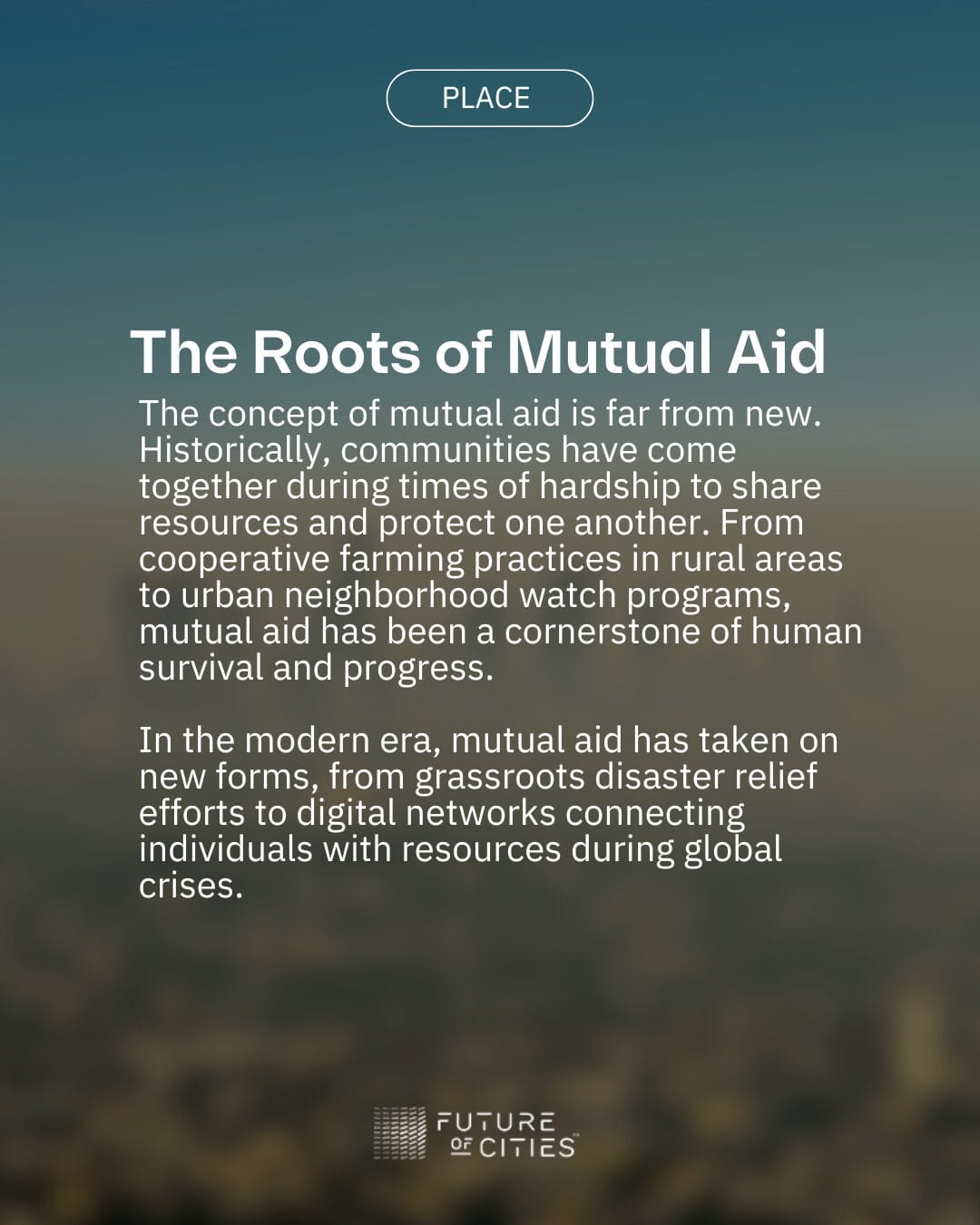
The Roots of Mutual Aid
The concept of mutual aid is far from new. Historically, communities have come together during times of hardship to share resources and protect one another. From cooperative farming practices in rural areas to urban neighborhood watch programs, mutual aid has been a cornerstone of human survival and progress.
In the modern era, mutual aid has taken on new forms, from grassroots disaster relief efforts to digital networks connecting individuals with resources during global crises.

Why Mutual Aid Matters in Crisis
- Filling Gaps in Institutional Support • During crises, government and large-scale organizations often struggle to provide timely and adequate support. Mutual aid groups can act swiftly to meet immediate needs, offering food, shelter, medical supplies, and emotional support.
- Strengthening Social Bonds • Mutual aid fosters a sense of belonging and trust within communities. By working together, individuals develop stronger relationships and a shared sense of purpose.
- Expanded Access to Resources • Often, the most vulnerable populations are overlooked in traditional relief efforts. Mutual aid ensures that these groups have a voice and access to resources, addressing systemic inequities.
- Building Long-Term Resilience • Beyond immediate relief, mutual aid networks can serve as a foundation for long-term community resilience, promoting self-sufficiency and collective problem-solving.
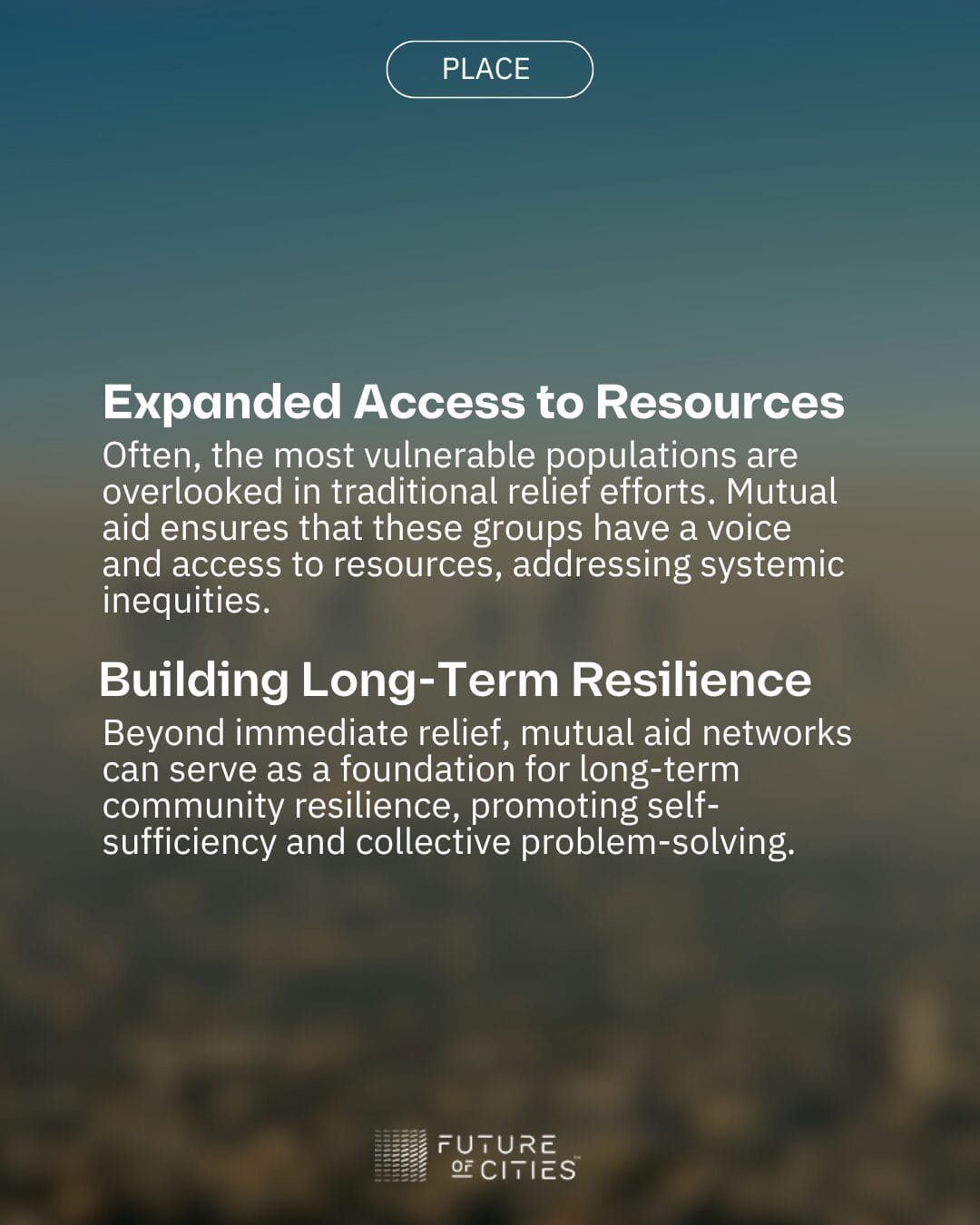
How to Participate in Mutual Aid
- Join Local Groups • Look for mutual aid networks in your area. Many communities have social media groups or websites dedicated to organizing efforts.
- Share Your Resources • Whether it’s food, clothing, skills, or time, every contribution matters.
- Amplify Voices • Use your platform to raise awareness of mutual aid initiatives and advocate for those in need.
- Practice Solidarity, Not Charity • Approach mutual aid with the understanding that we are all interconnected, and supporting others strengthens the entire community.

Challenges and Opportunities
While mutual aid is a powerful tool for community resilience, it is not without its challenges. Sustaining efforts over time, avoiding burnout, and ensuring inclusivity are common obstacles. However, these can be mitigated through clear communication, shared leadership, and the use of technology to streamline coordination. The rise of digital platforms has expanded the reach and efficiency of mutual aid networks, enabling communities to mobilize faster and connect across geographic boundaries.
In times of crisis, mutual aid reminds us of a fundamental truth: we are stronger together. By prioritizing collective care and community-driven solutions, we can not only weather storms but also build a more equitable and compassionate society.
With the Future of Cities expansion to Europe, we’ve been keeping our finger on the pulse for innovative conservation efforts, particularly in Portugal.
Initiatives like the Azores Marine Protected Area exemplify the critical intersection of biodiversity preservation, sustainable economic opportunity and cultural well-being. This new legislation, announced in October 2024 leading up to the UN Biodiversity Conference (CBD COP16) in Cali, Colombia, establishes the largest marine protected area network in the North Atlantic Ocean.
“The sea is an integral part of our collective identity, being vital socially, culturally and economically. We are committed to protect and recover our ocean to support a healthy blue economy. Our decision through a science-based and participatory process leading to the protection of 30% of our seas serves as an example that other regions must follow now to ensure the future health of the planet.”
José Manuel Bolieiro, President of the Regional Government of the Azores.

A Milestone for Ocean Protection
Spanning 287,000 square kilometers (about 110,800 square miles), the Azores’ new marine protected area (MPA) safeguards 30% of the surrounding ocean. This effort aligns with the global goal set in 2022 to protect 30% of the world’s land and ocean by 2030—a target aimed at addressing the urgent biodiversity crisis. Currently, only 8% of the ocean is under protection, and less than 3% is fully or highly safeguarded, making the Azores’ achievement a monumental step forward.
The Azores’ marine conservation effort isn’t just about numbers; it’s a testament to science-driven and participatory governance. The Azores Archipelago began their efforts with marine protection in the 1980s, evolving through joint collaboration among government, universities, and local communities. The Blue Azores program, launched in 2019 from a partnership between the Regional Government of the Azores, the Oceano Azul Foundation and the Waitt Institute, and the University of the Azores, has contributed to significant advances in marine conservation in the region.
“The benefits from this Marine Protected Area network will be far-reaching across Europe, North America and North Africa,”
says Bernardo Brito E Abreu, who’s been leading the Blue Azores team and is the Advisor to the President of the Government of the Azores on Sea Affairs and Fisheries.
This process ensures the preservation of deep-sea corals, whales, dolphins, sharks, manta rays, unique hydrothermal vent ecosystems, and countless other marine species as MPAs are widely recognized as the most effective tool in the global effort to reverse biodiversity loss.
The Azores is an autonomous region off the coast of Portugal, consisting of a stunning archipelago of nine volcanic islands in the North Atlantic Ocean. Located about 1,360 kilometers (850 miles) west of mainland Portugal, the Azores are renowned for their breathtaking natural landscapes, rich marine biodiversity, and unique cultural heritage.

- Geography and Nature:
- The islands are volcanic in origin, featuring dramatic cliffs, lush green valleys, crater lakes, hot springs, and rugged coastlines.
- The archipelago includes nine islands divided into three groups:
- Eastern Group: São Miguel and Santa Maria
- Central Group: Terceira, Graciosa, São Jorge, Pico, and Faial
- Western Group: Flores and Corvo
- Marine Biodiversity:
- The waters surrounding the Azores are a hotspot for marine life, including whales, dolphins, sharks, manta rays, and deep-sea corals.
- The region is particularly known for whale watching and as a migratory route for various marine species.
- Culture and Autonomy:
- The Azores have a distinct cultural identity, shaped by centuries of Portuguese heritage combined with the isolated geography of the islands.
- The islands operate as an autonomous region of Portugal with their own government, legislative assembly, and administrative policies.
- Sustainability and Conservation:
- The Azores are globally recognized for their commitment to environmental conservation and sustainable tourism.
- Recent initiatives, such as the creation of the Azores Marine Protected Area Network, underscore the region’s dedication to protecting biodiversity.
The Azores is a prime example of a region balancing environmental conservation with economic development, making it an inspiring model for regenerative living and sustainable tourism.

Why Marine Conservation Matters for Urban Life
What does an oceanic conservation milestone have to do with the health of cities and their residents? The answer lies in the interconnectedness of ecosystems and urban environments. Marine ecosystems are vital to the planet’s climate regulation, carbon sequestration, and food security—all factors that directly or indirectly impact urban populations.
Healthy oceans contribute to civic health by:
- Enhancing Climate Resilience: Coastal and marine ecosystems, like mangroves and coral reefs, act as natural barriers against storms and rising sea levels. Protecting these ecosystems supports urban areas vulnerable to climate-related disasters.
- Ensuring Food Security: Sustainable fishing practices within MPAs ensure long-term food supply chains for urban and rural populations alike.
- Boosting Economic and Cultural Vitality: Coastal cities benefit economically and culturally from marine tourism and sustainable industries tied to vibrant ocean ecosystems.
The Azores as a Model for Autonomy & Sustainability
The Azores’ achievement serves as a model for how science-based, community-driven initiatives can lead to sustainable growth. By prioritizing conservation, the region not only protects biodiversity but also sets a precedent for urban areas to integrate nature-based solutions into their development plans.
The work of organizations like Pristine Seas, which has contributed to 29 marine protected areas globally, showcases the importance of partnerships in achieving such ambitious goals. For urban planners, policymakers, and environmental advocates, the Azores’ success underscores the value of cross-sector collaboration in tackling the interconnected challenges of climate change, biodiversity loss, and civic well-being.
Together, we can co-create a future where land and ocean conservation are deeply intertwined with the health and vitality of urban communities.
Join Us in Portugal
Sources:
- National Geographic: The Azores Establishes Largest Marine Protected Area Network in Europe
- National Geographic Expeditions: Exploring Portugal and the Azores
- https://iucn-members.us/2024/11/08/azores-archipelago-become-north-atlantics-largest-mpa/
- https://www.discoverwildlife.com/environment/azores-marine-protected-area
Miami’s vibrant art and environmental communities are showcasing creativity and ecological innovation at an unparalleled scale.

The Miami Reef Star, a groundbreaking collaboration by artist Carlos Betancourt and architect Alberto Latorre, is now on display at the Climate & Innovation HUB powered by Future of Cities before its ultimate deployment as an underwater sculptural art installation in 2025. Commissioned by The ReefLine, this project represents a fusion of art, architecture, and environmental science that breathes new life into Miami’s marine ecosystems.
A Star Born from Innovation
The Miami Reef Star is much more than an Art Week art installation; it’s a hybrid reef designed with ecological purpose. Crafted using 3D-printed environmentally friendly concrete, the star’s jagged textures and intricately designed openings replicate the natural features of coral reefs. These design elements create an ideal habitat for marine organisms, providing shelter for smaller creatures and allowing light to filter through to support a thriving internal ecosystem.
A unique “Coral Lok” mechanism further elevates the star’s functionality. This innovative feature facilitates coral planting, turning the sculpture into a dynamic, living reef that will contribute to the restoration of Miami’s underwater habitats. By combining artistic vision with ecological engineering, the Miami Reef Star embodies the future of sustainable marine conservation.
The All-Star Team
The creation of the Miami Reef Star brought together a stellar team of visionaries, including Carlos Betancourt, Alberto Latorre , and Ximena Caminos, Brandi Reddick and the entire ReefLine team.
During Art Week Miami Beach from December 2-8, 2024, the prototype was on display between 36th and 37th streets, offering visitors an interactive glimpse into its transformative potential & it’s innovative 3D printed texture.
From Shoreline to Seafloor
The Miami Reef Star will soon make its journey underwater, where it will be relocated 15-20 feet beneath the surface, within easy swimming distance from the shore slated for 2025 deployment. This transition marks the next phase of its life as part of The ReefLine’s ambitious 7-mile underwater sculpture park. Masterplanned by the renowned architecture firm OMA and ReefLine founder Ximena Caminos, this park blends environmental awareness with artistic expression to foster a deeper connection between Miami’s residents, visitors, and marine life.
The ReefLine’s underwater installations, including the Miami Reef Star, are designed to promote marine biodiversity while serving as a beacon of Miami Beach’s commitment to innovation and sustainability. Inspired by the starfish’s natural migration patterns, the Miami Reef Star and its counterparts will form a vibrant underwater landscape, drawing both marine organisms and human admirers to this unique ecological art destination.

A Celebration of Collaboration
The Miami Reef Star’s new home on land at the Climate & Innovation HUB powered by Future of Cities underscores the power of interdisciplinary collaboration. By merging art, science, and community, The ReefLine and its partners are charting a course toward a more sustainable future—one that celebrates Miami’s unique relationship with the ocean and the stars above.
Together, we are reimagining our role as stewards of both art and the environment, proving that when stars align, anything is possible. Schedule a tour of the Future of Cities headquarters and visit the Miami Reef Star IRL.
3D Prototypes printed by: Kind Design, MADCO3D and 3D Potter
In an era marked by rapid urbanization and environmental challenges, the concept of regenerative communities is emerging as a beacon of hope.
Unlike traditional models of development that often deplete natural and social resources, regenerative communities aim to restore, renew, and revitalize ecosystems and human well-being. This holistic approach integrates sustainability, community engagement, and innovation to create spaces that not only sustain life but enhance it.
We need each other. We always have. As our world faces escalating challenges—climate change, social inequities, and environmental degradation—we are being called to take care of one another once again. The path forward lies in rediscovering the strength of communal care and embracing regenerative living. Regenerative communities are built on dynamic interdependence, where relationships between people and the environment are nurtured to create systems that thrive together. By returning to these principles, we can foster resilience, heal the land, and ensure a flourishing future for generations to come.
What Are Regenerative Communities?
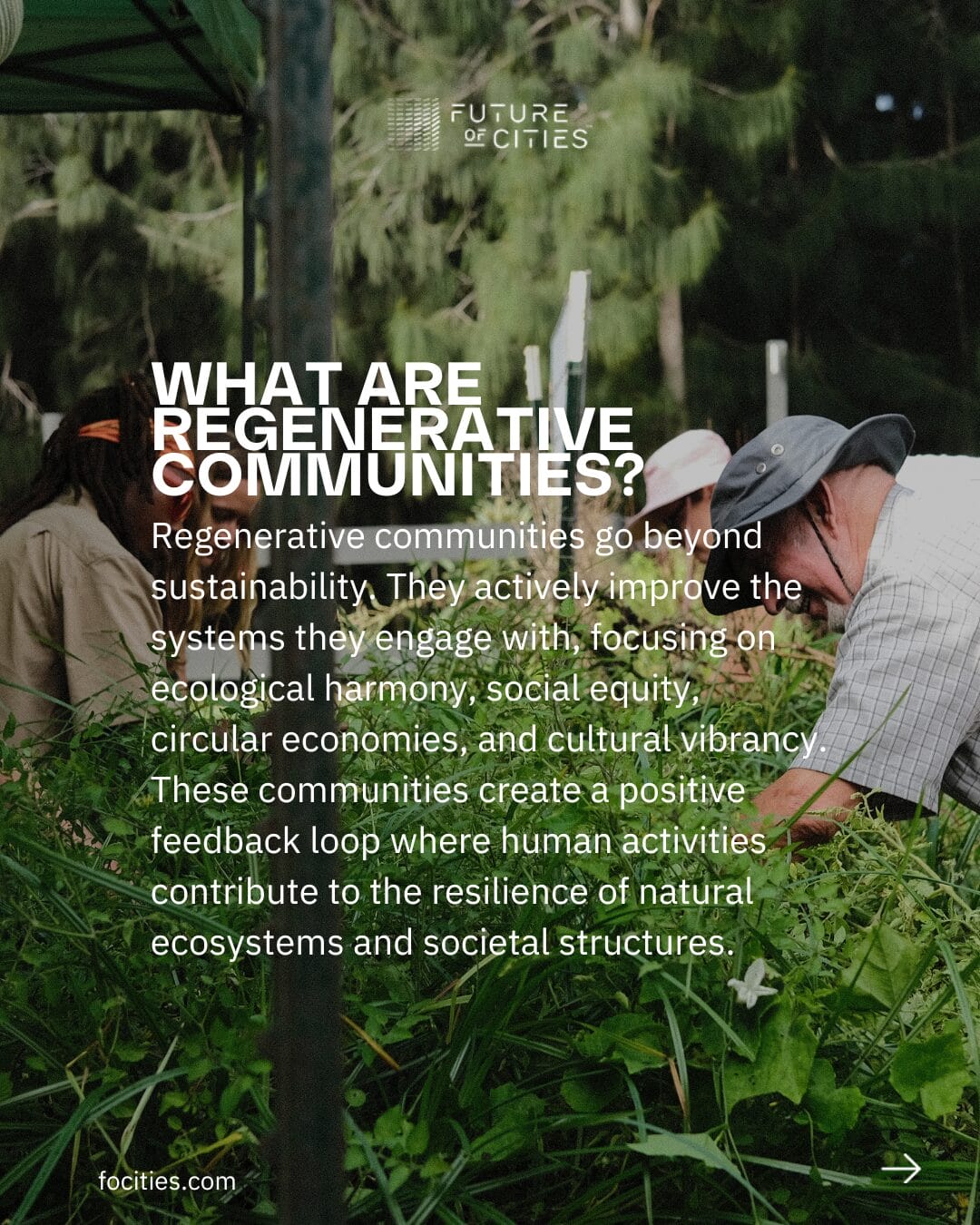
Regenerative communities go beyond sustainability to actively improve the systems they interact with. These communities prioritize the health of the planet, the prosperity of people, and the vitality of place. Regeneration means creating a positive feedback loop where human activities contribute to the resilience of both natural ecosystems and societal structures.
Key principles include:
- Ecological Harmony: Integrating green infrastructure, renewable energy, and biodiversity into community design.
- Social Equity: Ensuring inclusivity, diversity, and access to opportunities for all members.
- Circular Economies: Minimizing waste by designing systems that reuse resources efficiently.
- Cultural Vibrancy: Honoring local traditions, arts, and narratives while fostering innovation.
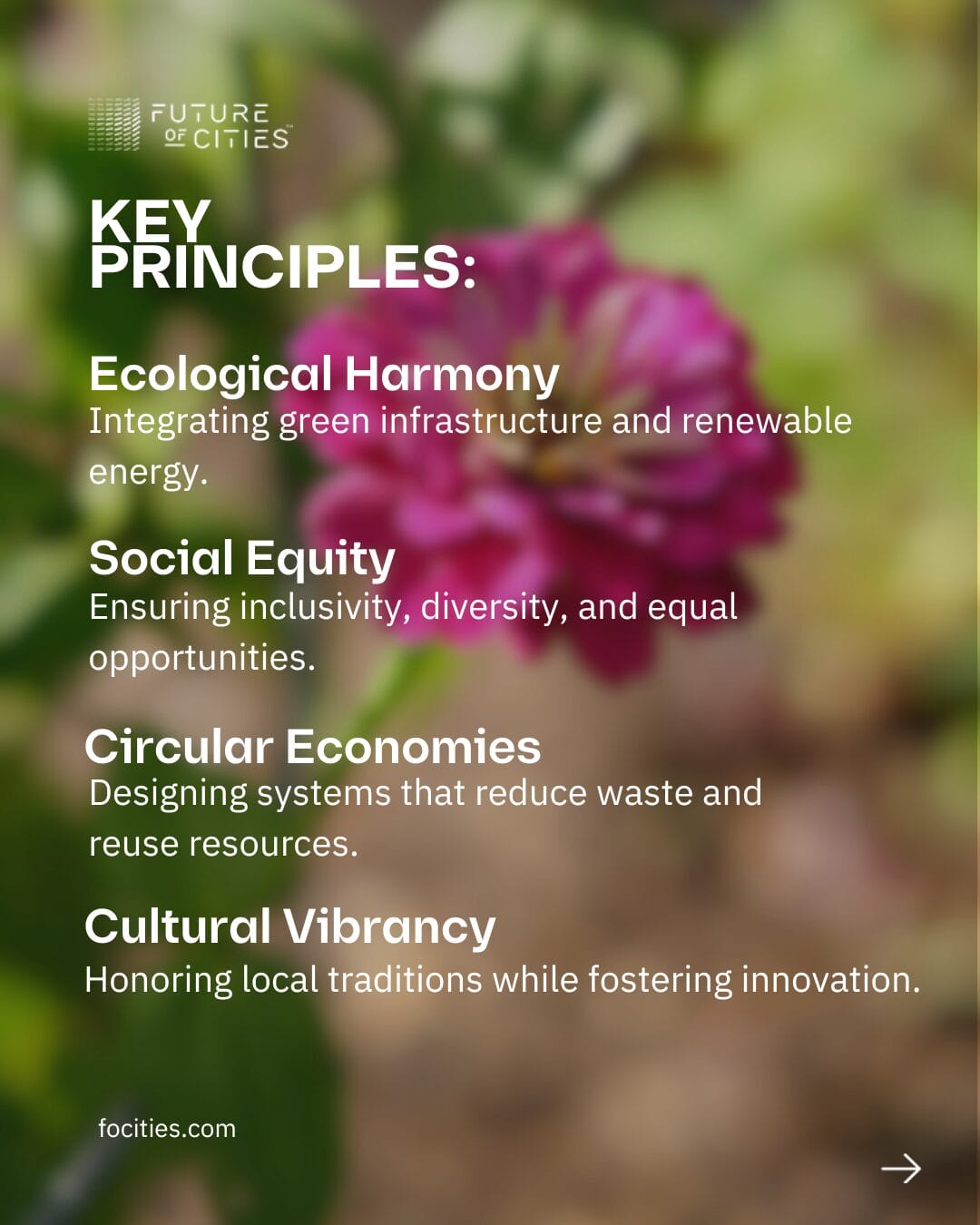
Why Do We Need Regenerative Communities?
The current trajectory of urban and suburban development has led to significant environmental degradation and social disconnection. Climate change, loss of biodiversity, and unsustainable resource use are escalating crises that demand new solutions. Regenerative communities offer a pathway to:
- Mitigate environmental impact through practices like permaculture, carbon sequestration, and water recycling.
- Build resilience to climate-related disasters by emphasizing local food systems and disaster preparedness.
- Strengthen social ties by fostering participatory governance and shared spaces.
Examples of Regenerative Practices
- Land Restoration: Projects like agroforestry and wetland restoration can reverse environmental damage while providing habitat and resources.
- Net-Zero Developments: Communities powered by renewable energy and designed for energy efficiency.
- Urban Farming: Integrating rooftop gardens, vertical farming, and community agriculture into urban settings.
- Co-Housing Models: Shared spaces and resources that reduce environmental footprints and increase affordability.
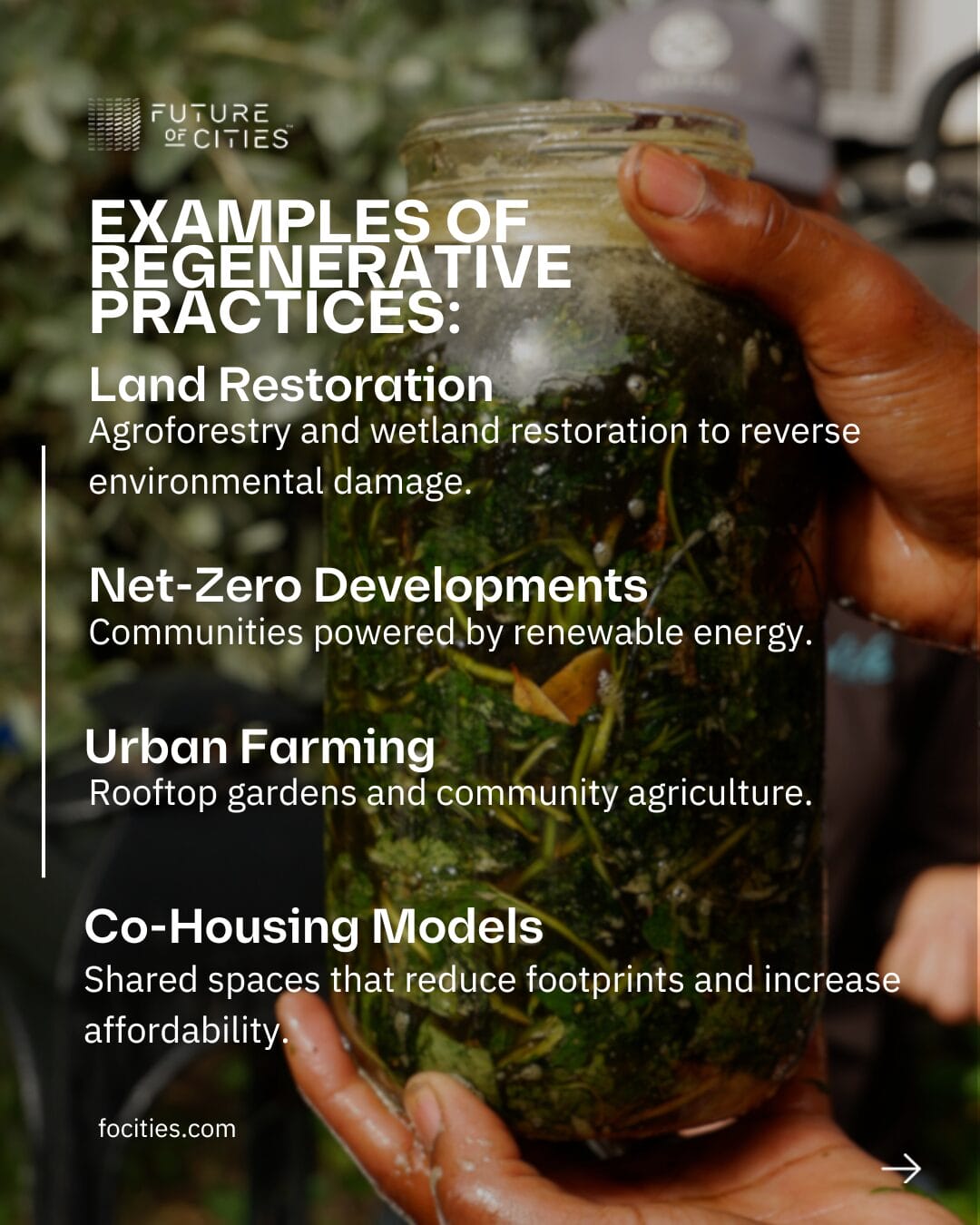
How to Build Regenerative Communities
1. Engage Stakeholders
Involve local residents, policymakers, businesses, and environmental experts from the outset. Inclusive decision-making ensures the community reflects diverse needs and perspectives.
2. Design for Place
Understand and respect the ecological and cultural context of the area. Regenerative design is site-specific, emphasizing local materials and traditions.
3. Leverage Technology
Utilize not just smart systems but wise systems for energy management, waste reduction, and community connectivity. Emerging technologies like blockchain can enhance transparency and collaboration.
4. Educate and Empower
Provide resources and workshops to teach residents sustainable practices. Empower individuals to become stewards of their environment.
5. Measure and Adapt
Set clear metrics for success across environmental, social, and economic dimensions. Use data to refine strategies and address challenges.
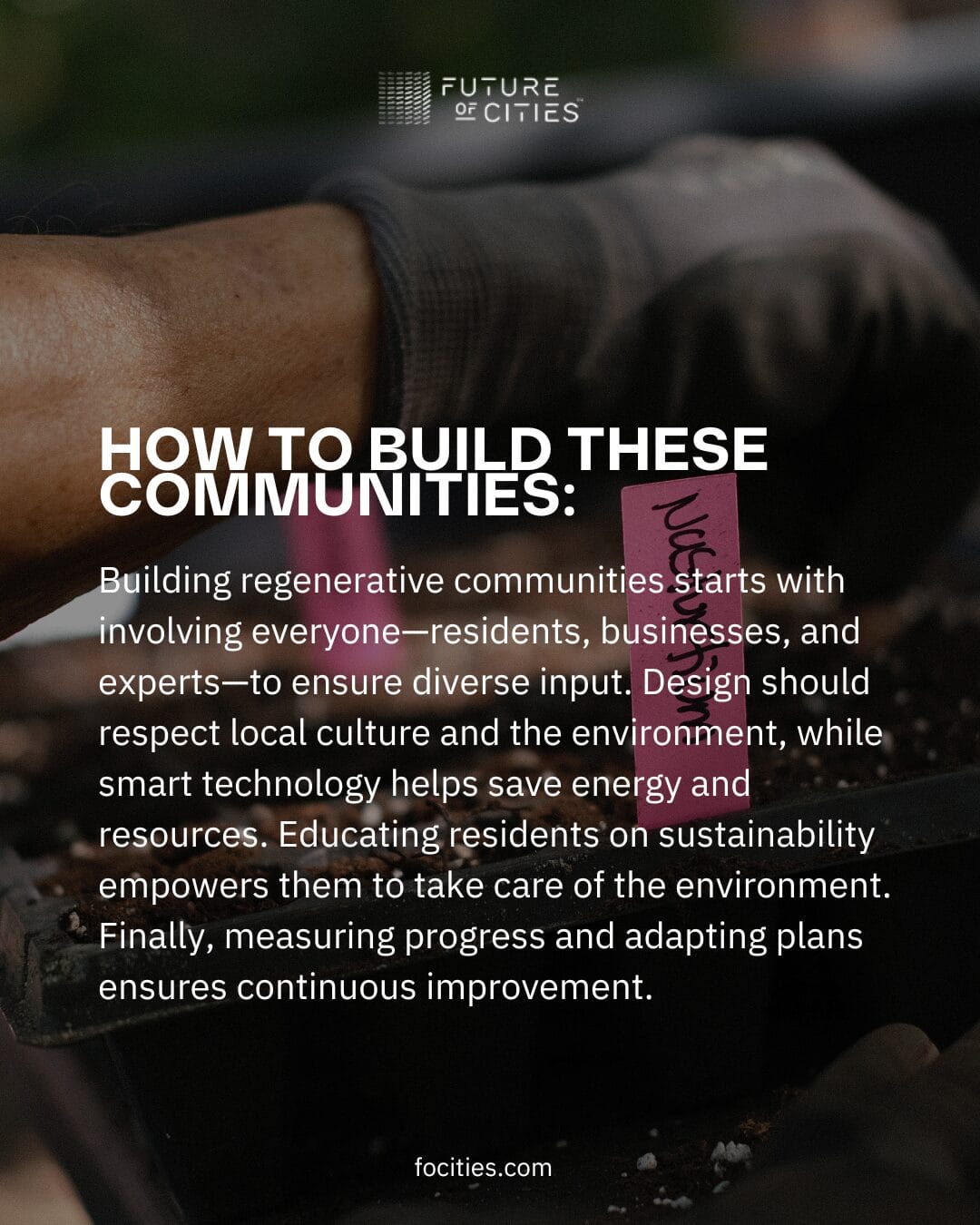
The Importance of Intergenerational Communities
Intergenerational communities are vital to fostering resilience, connection, and a deeper sense of belonging in regenerative developments. These communities blend the wisdom of older generations with the innovation and energy of younger ones, creating a harmonious exchange of knowledge, skills, and perspectives. By designing spaces where people of all ages can coexist and collaborate—whether through shared gardens, cultural programs, or mentorship initiatives—we cultivate a rich tapestry of relationships that strengthen social bonds. Intergenerational living not only supports holistic well-being but also ensures that traditions and values are preserved while allowing for growth and adaptation. In these communities, the focus shifts from individual isolation to collective flourishing, laying the foundation for a regenerative future that honors both past legacies and future possibilities.
The Role of Demonstration Projects in Shaping Tomorrow’s Cities
Future of Cities, through its demonstration projects—the Phoenix Art & Innovation District, Climate & Innovation HUB, ChoZen Eco-Retreat, and Portugal+ Golden Visa Program —provides living examples of these principles in action. Each project is a testament to the power of intentional design, collaboration, and community-driven development in crafting spaces that give back to the planet and its people.
Phoenix Art & Innovation District
The Phoenix Art & Innovation District reimagines the role of arts and culture in urban revitalization. Situated in a fast-growing metropolitan area in the U.S., this district seeks to integrate public art, technology, and green infrastructure to cultivate economic development and social equity. By anchoring its design in regenerative principles, the district prioritizes inclusive public spaces. The project serves as a hub where creativity intersects with innovation, inviting collaboration from diverse stakeholders to address pressing urban challenges while enhancing community vibrancy.
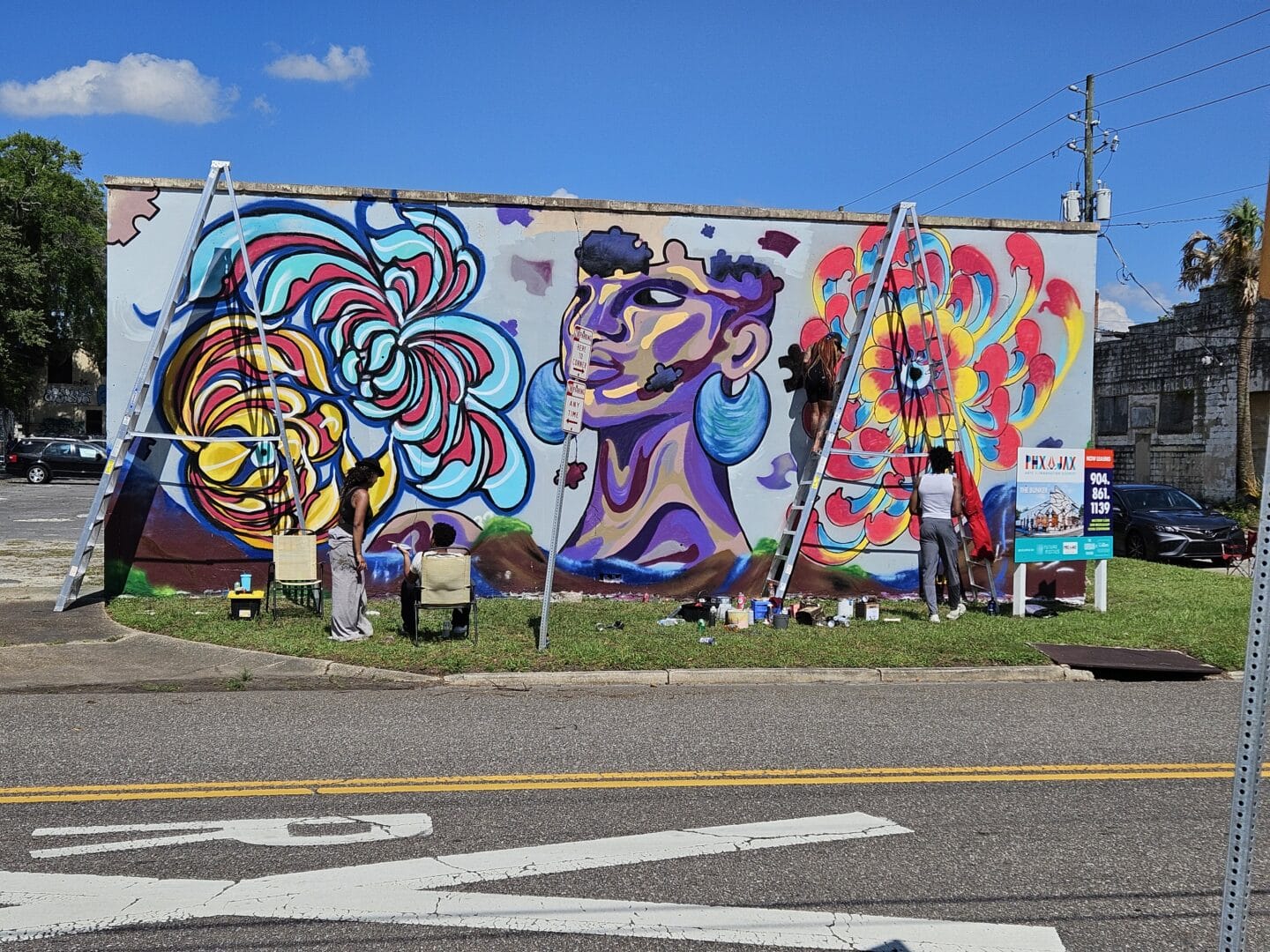
Jacksonville, Florida, has experienced notable population growth in recent years. Between July 2022 and July 2023, the city added approximately 14,000 residents, ranking fourth in numeric population gain among U.S. cities during that period. Source: First Coast News
Climate & Innovation HUB
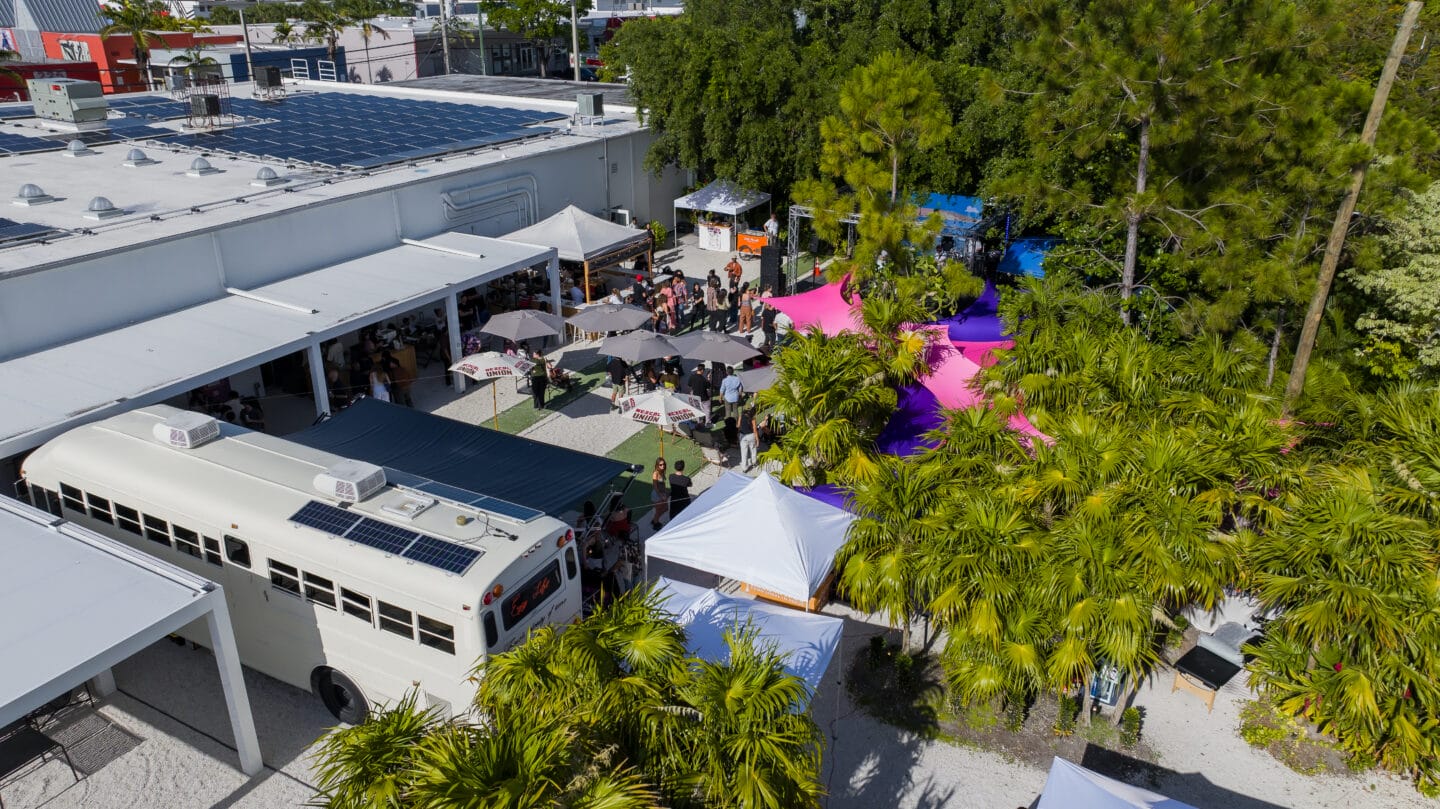
At the Climate & Innovation HUB in Miami, the emphasis is on forging solutions to climate resilience through education, entrepreneurship, and cross-sector collaboration. This initiative, a beacon for regenerative urbanism, hosts events, workshops, and incubator programs that tackle critical issues such as rising sea levels and sustainable architecture. By convening thought leaders, developers, and policymakers, the HUB creates a dynamic space where forward-thinking ideas are put into practice. With a focus on circular economies, climate tech and community empowerment, the HUB epitomizes how local action can inspire global change.
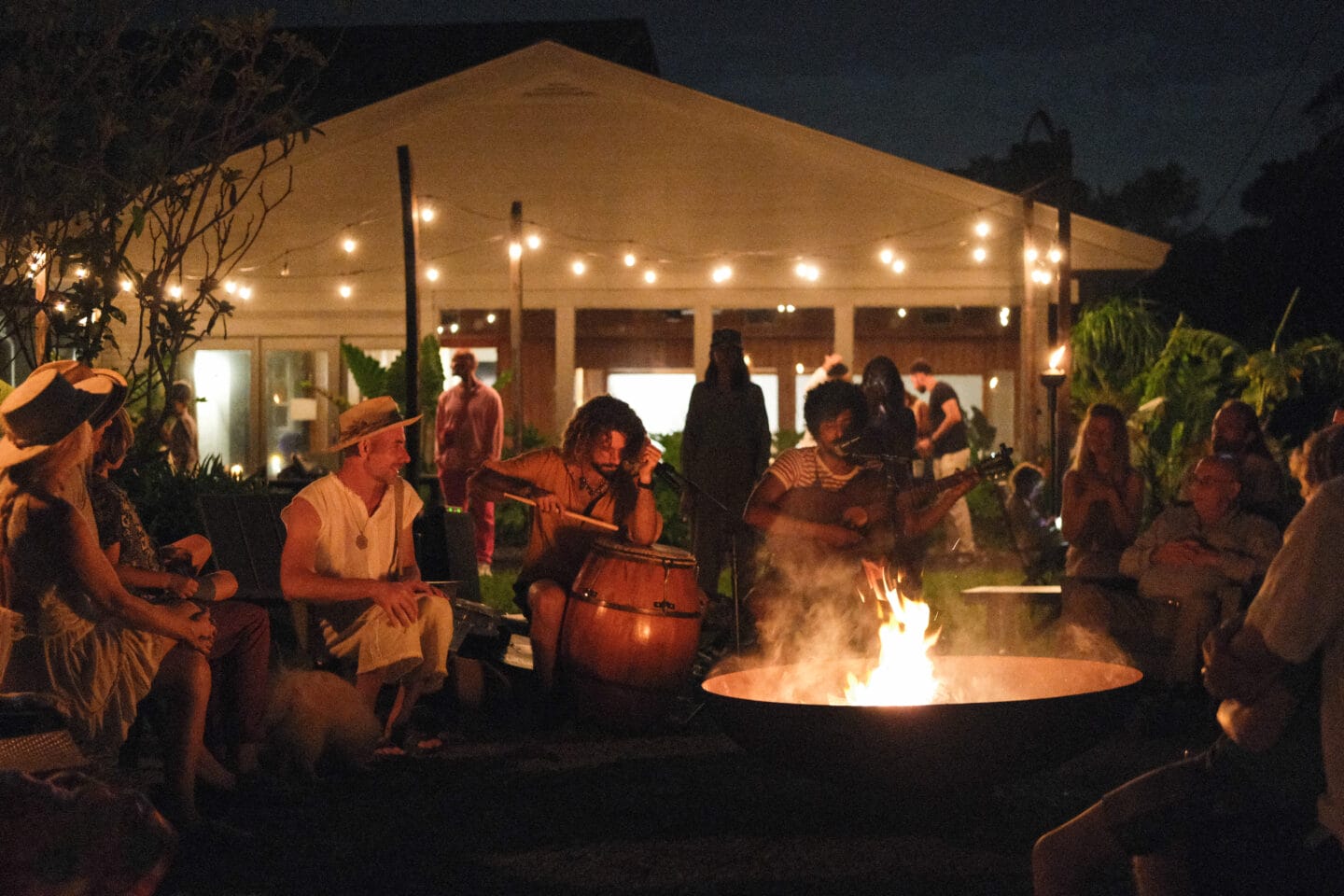
ChoZen Eco-Retreat
Future of Cities also extends its regenerative ethos to natural landscapes, exemplified by the ChoZen Eco-Retreat in Sebastian, Florida. ChoZen embodies holistic living, merging eco-tourism with permaculture, land conservation, soil health, wellness, and education through ChoZen Air & ChoZen Farm. Visitors experience firsthand how living in harmony with nature can heal and enrich both land and spirit. These initiatives underscore the importance of balancing human needs with ecological stewardship, showing that regeneration is not a theory but a lived practice that connects people to place and purpose.
Community, Nature, Culture
Through our demonstration projects at Future of Cities, we are proving that a better way of building and living is not just possible—it is already unfolding. At the heart of these projects are the core pillars of regenerative placemaking: community, nature, and culture. Within each community – connection, resilience, and reciprocity come to life in unique and vibrant ways, embracing and expressing distinct styles, creative visions, and values.
From the dynamic creative culture and small business-focused circular economies at the Phoenix Arts & Innovation District to the climate-forward innovation and intentionality of the Climate & Innovation HUB in Miami, from the holistic regenerative living, farming, and eco-adventures at ChoZen Eco-Retreat & Sanctuary to the cultural preservation and pioneering regenerative development efforts in Portugal through the Portugal+ Golden Visa Program, each project reflects its distinct character and purpose. Together, they serve as powerful models for a thriving, regenerative future.
A Vision for the Future
Imagine neighborhoods where every building generates more energy than it consumes, green corridors connect communities to nature, and residents feel a profound sense of belonging and purpose. Regenerative communities embody this vision, offering a roadmap for thriving futures.
As we confront the challenges of the 21st century, the shift from extractive to regenerative practices isn’t just an option—it’s a necessity. By embracing regenerative principles, we can create communities that sustain life and inspire generations to come.
Check us out on Amazon Prime! Get a behind the scenes look with Future of Cities Founder Tony Cho as he takes you through each of our demonstration projects featured in the Road to Utopia series.
In the first episode Tony shares about Regenerative Communities and takes you through the lands and stories of place throughout the state of Florida from Miami to Sebastian to Jacksonville. Together, they exemplify how diversity in approach, biodiversity in ecosystems & ecosystems thinking creates a unified movement toward a regenerative future.
Cities are more than just buildings and streets. They are living, breathing ecosystems fueled by the energy of people, culture, and innovation. As we stand at the crossroads of a rapidly changing world, the future of urban living calls for bold ideas, collaborative action, and sustainable solutions. That’s where you come in.
Why Join Us?
At Future of Cities, we are building a community for forward-thinkers, innovators, and changemakers who share a vision for creating thriving, sustainable, and regenerative urban environments. Together, we aim to address the challenges of today while designing solutions for tomorrow—grounded in sustainability, creativity, and a deep respect for our planet.
Here’s what you can expect as part of our movement:
1. Be at the Forefront of Innovation
Explore cutting-edge ideas and solutions that reshape urban living. From regenerative architecture to circular economies, you’ll engage with projects and initiatives pushing the boundaries of what’s possible.
2. Build a Better World Together
Collaborate with a diverse network of individuals—urban planners, artists, architects, entrepreneurs, and environmental advocates—who are united by a shared purpose. It’s not just about conversations; it’s about co-creating actionable strategies for positive impact.
3. Learn and Grow
Participate in thought-provoking events, workshops, and discussions that challenge conventional thinking. Gain insights from global experts and contribute your own unique perspective to the dialogue.
4. Create Lasting Impact
Our mission is rooted in the belief that cities can be engines of regeneration—places where people and the planet thrive together. Your involvement helps us pioneer models of urban development that inspire real, measurable change.
Who Is This For?
This movement is for anyone who:
- Believes in the power of sustainability and regeneration.
- Sees creativity as a tool for transformation.
- Is passionate about reimagining cities as hubs of community, culture, and environmental stewardship.
- Wants to be part of a forward-thinking network of leaders, creators, and problem-solvers.
Whether you’re a seasoned professional, a student with big dreams, or someone simply curious about the possibilities for better urban living, your voice and vision are welcome here.
Ways to Join us…
There are a variety of ways to become a part of the Future of Cities community
- Become a Partner: Strategic partners include educational institutions, corporations, foundations, governments, non-profits, and NGOs.
- Collaborate and Co-Create Have a project idea or want to contribute your skills? We’d love to hear from you. Collaboration is at the heart of everything we do. Apply to join the Future of Cities WhatsApp Community today.
- Subscribe to Our Newsletter: Stay informed about upcoming events, thought leadership pieces, and opportunities to collaborate.
- Attend Upcoming Events: From live discussions to hands-on workshops, our events are designed to inspire and empower.
- Engage on Social Media: Connect with us on Instagram, LinkedIn, YouTube and Facebook to share ideas, meet like-minded individuals, and spread the message of change.
Let’s Build the Future Together
The future of cities isn’t written yet—it’s being created, one idea, one project, and one community at a time. By joining this movement, you’re not just imagining a better world; you’re actively building it.
So, what are you waiting for? Join the movement today and be part of a legacy of sustainable, regenerative, and creative urban living.
